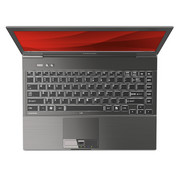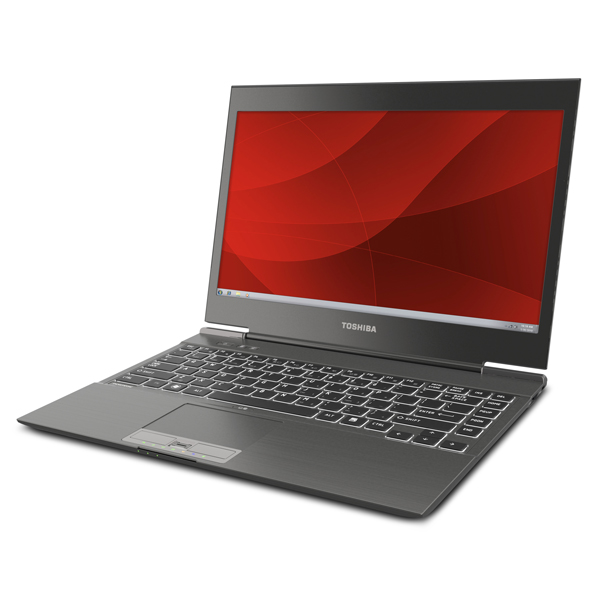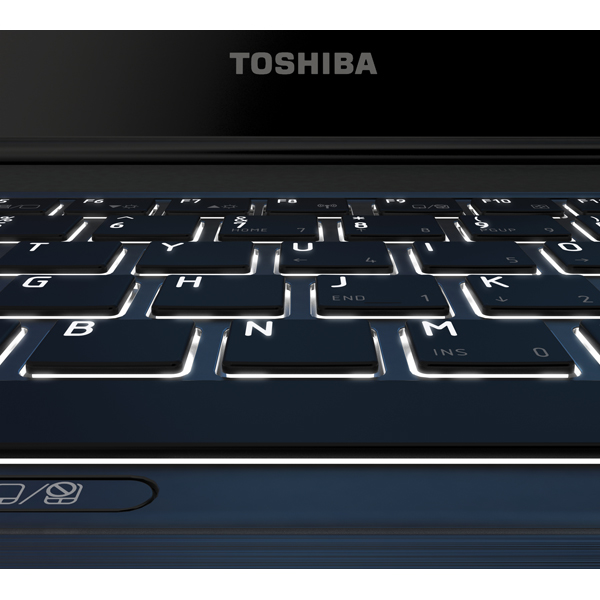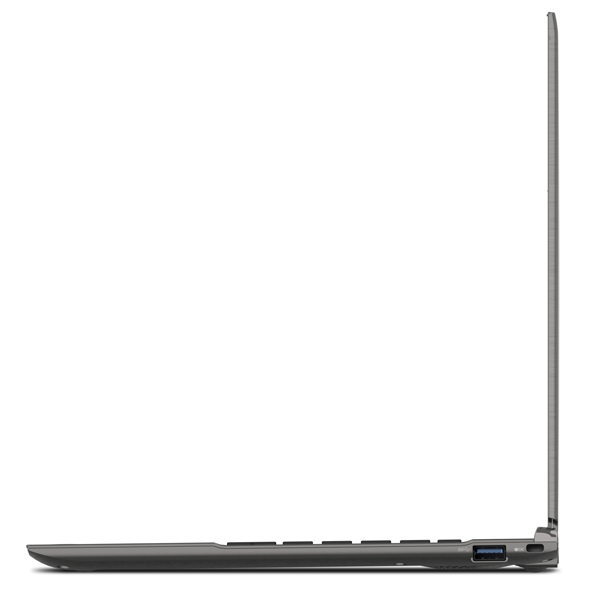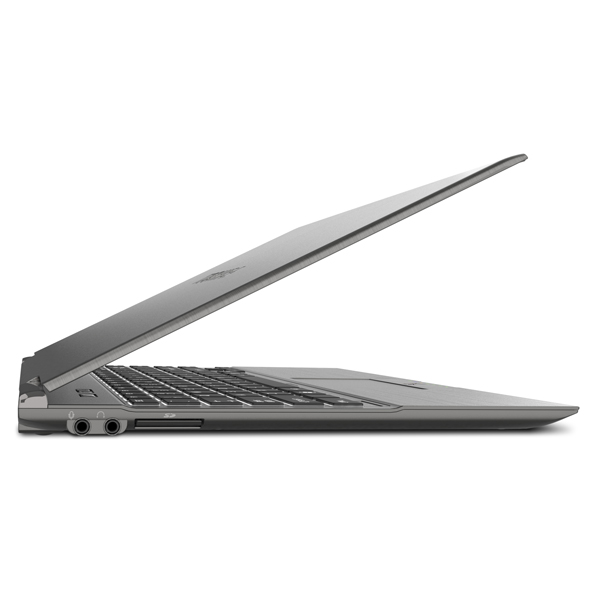Toshiba Portege Z935-P300
Ausstattung / Datenblatt
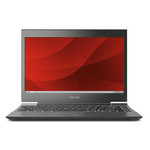
Preisvergleich
Durchschnitt von 4 Bewertungen (aus 5 Tests)
Testberichte für das Toshiba Portege Z935-P300
Quelle: CNet
 EN→DE Archive.org version
EN→DE Archive.org versionThe Toshiba Portege Z930 series is a textbook example of a mainstream ultrabook. It's thin, it's light, its battery life is very good, and the entry-point model I tested, the Z935-P300, has enough processing performance for normal everyday computing.The Toshiba Portege Z935-P300 is an excellent ultrabook value if you can overlook its few design shortcomings.
Einzeltest, online verfügbar, Mittel, Datum: 04.10.2012
Bewertung: Gesamt: 77% Leistung: 80% Mobilität: 80%
Quelle: PC World
 EN→DE Archive.org version
EN→DE Archive.org versionThe Toshiba Portégé Z935 Ultrabook gets a solid 2.5-star rating. For some business users, such as those who go to a lot of meetings and make basic presentations, it will be a pretty good laptop. After all, it’s lightweight, is a solid overall performer, and has several nice hookup options, including VGA and HDMI, as well as WiDi and Bluetooth. For other business users—those who travel often and want to get work done on the fly—the Portégé Z935 is a poor choice. The keyboard and trackpad definitely need some work, and the overall construction doesn’t seem very sturdy. Plus, multimedia performance is pretty weak, even for the ultraportable category.
Einzeltest, online verfügbar, Kurz, Datum: 03.10.2012
Quelle: Laptop Mag
 EN→DE Archive.org version
EN→DE Archive.org versionThe Toshiba Portege Z935-P300 is an Ultrabook to be reckoned with. Like last year's version, it's super-light at 2.4 pounds, but a stronger performer, thanks to the combination of a third-gen Intel Core processor and faster SSD. We just wish the keyboard offered a bit more travel and that Toshiba offered a higher-resolution display. Overall, though, the Z935's design, port selection and speed earns it high marks.
Einzeltest, online verfügbar, Lang, Datum: 01.10.2012
Bewertung: Gesamt: 80%
Quelle: PC Mag
 EN→DE Archive.org version
EN→DE Archive.org versionThe Toshiba Portege Z935-P300 approaches the ideal for ultrabooks. It's very thin, very light, has decent performance, and has very good battery life. While other 13-inch ultrabooks like the Asus Zenbook Prime UX31A-R5102F come with a higher-resolution screen, less critical users willing to trade a higher res screen for some real savings won't mind. The Z935-P300 also has better battery life than the Asus UX31A-R5102F. The HP Folio 13-1020us has better battery life still, but the components in the newer crop of ultrabooks like the Z935-P300 has surpassed the HP 13-1020us' now dated hardware. Power, low weight, comfortable interfaces, battery life, and a whole slew of user-friendly features means that the Toshiba Portege Z935-P300 is our new Editors' Choice for mainstream utlrabooks.
Einzeltest, online verfügbar, Sehr kurz, Datum: 28.09.2012
Bewertung: Gesamt: 80%
Quelle: Comp Reviews
 EN→DE Archive.org version
EN→DE Archive.org versionFor those that want the lightest 13-inch laptop they can get, they don't get any lighter than the two and a half pound Toshiba Portege Z935. Even with this low weight, the ultrabook offers some of the best running times available and has a very reasonable price tag. Of course, the design of the system is rather dated with its boxy look and the lighter weight does make it feel more flimsy.
Einzeltest, online verfügbar, Kurz, Datum: 19.09.2012
Bewertung: Gesamt: 80%
Kommentar
Intel HD Graphics 4000: In Ivy Bridge Prozessoren (3. Generation Core) integrierte Grafikkarte in höchster Ausbaustufe. Je nach Prozessor (ULV bis Desktop Quad-Core) unterschiedlich getaktet.
Einige nicht anspruchsvolle aktuelle Spiele können mit geringen Details noch flüssig gespielt werden. Für Office und Video natürlich ausreichende Leistungsreserven.
» Weitere Informationen gibt es in unserem Notebook-Grafikkartenvergleich und der Benchmarkliste.
3317U:
Stromspar-Doppelkernprozessor mit nur 1.7 GHz Basisfrequenz aber einem Turbo bis zu 2.6 GHz (bei ausreichender Kühlung). Integriert die Intel HD Graphics 4000 (jedoch nur mit 350 - 1050 MHz Taktung) und einen DDR3-1600 Speicherkontroller.
» Weitere Infos gibt es in unserem Prozessorvergleich Vergleich mobiler Prozessoren und der Prozessoren Benchmarkliste .


